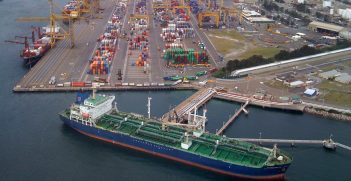Advantages and Disadvantages of AUSFTA in the Automobile Industry

The Australia-United States Free Trade Agreement (AUSFTA) came into effect on the 1st of January 2005, after being signed the previous year. It has since allowed easy and greater access to Australian products into the United States.
Due to how large the US business market is, there are several factors to be considered for Australians looking to conduct business there, including culture, politics, and business etiquette. This is where the AUSFTA comes into play, as it covers everything to make the trading process easier for Australian companies. The AUSFTA has benefitted many businesses and industries, including the automotive sector. One of the outcomes of this is that Australian versions of US sites like Truecar or Carguru now exist.
The AUSFTA positively impacts the manufacturing sector in the United States, as it states that more than 99 percent of US-manufactured exports to Australia would become duty-free immediately upon its enforcement. This is a huge win for manufacturers, as it makes the export process seamless and they can worry less about heavy fees. It especially benefits huge sectors that involve the trading of automobiles and auto parts, information technology products, electrical equipment and appliances, paper and wood products, and more.
For Australia, the benefits are huge, especially considering the size of the American market. Customs duties on almost all automotive products have been eliminated, including the 2.5 percent duty on passenger motor vehicles, the 25 percent tariff on light commercial vehicles, and tariffs on auto parts and accessories exports. This means more manufacturers in Australia can easily integrate into the US market with the tariffs removed, thereby reducing the cost and giving them a chance among competitors.
The agreement has also aided economic growth. The AUSFTA was drafted based on the North American Free Trade Agreement (NAFTA) model, which has had a significant impact on the global trading system. This has led to increased economic growth over the years, as it has enabled more trading than ever before at lowered prices. It has also helped create more jobs and reduce the unemployment rate in the countries involved. There’s so much more to expect in the coming years from this agreement, and the constantly increasing economic growth is something to look forward to.
With an agreement in place, terms are stated clearly and are deliberated through public hearings and public access to documents. This gives room for transparency, especially in customs operations, which eventually encourages a better workflow and an improved trading system in the long run.
However, the agreement also comes with its disadvantages. Data from the Australia-Japan Research Centre in 2015 found that AUSFTA diverted Australia’s trade away from lowest-cost sources. This is due to the rules in place that have led to certain discriminations, as more manufacturers from Australia divert towards competitive suppliers rather than the most efficient ones. Because Australia and the United States might have reduced their trade with the rest of the world, the AUSFTA might also diverts the two countries away from more efficient sources.
Reducing the tariffs on imported goods might have been a great idea, but it also has its downsides, as it creates opportunity for increased job outsourcing to places with poor working conditions. This gives room for more companies to expand to other countries, to gain more, and make the most of the reduced or removed tariffs. It also forces some companies lay off more workers so that they can stand a chance with their competitors. As a result, the Labor Advisory Committee in a report to the US Trade Representative office recommended that Congress reject the AUSFTA because they believed the agreement failed to meet congressional negotiating objectives. There was also a concern that although the agreement would lead to trade creation between the parties involved, it may divert trade from third countries.
In conclusion, the AUSFTA has its pros and cons and has been subject to multiple debates and reviews over the years. However, for the most part, it has proved to be beneficial to the automobile industry on both ends. This calls for improved trading between Australia and The United States. The agreement could be modified to better serve both countries and to reduce the disadvantages. As the automobile industry continues to advance, this agreement will continue to have an impact and allow for a seamless flow of trade.
Stefan Paulo is a young entrepreneur. Stefan is passionate about politics and digital technologies and is constantly trying to find a way to implement them in the sphere of education.
This article is published under a Creative Commons License and may be republished with attribution.




